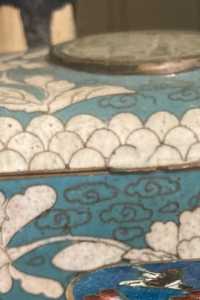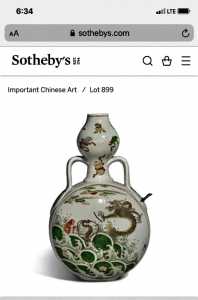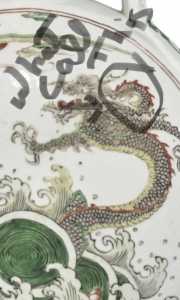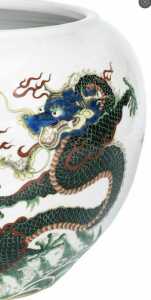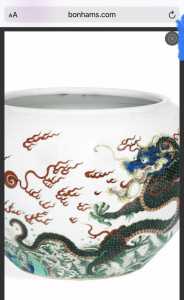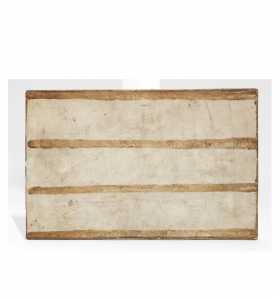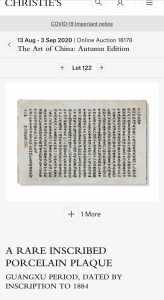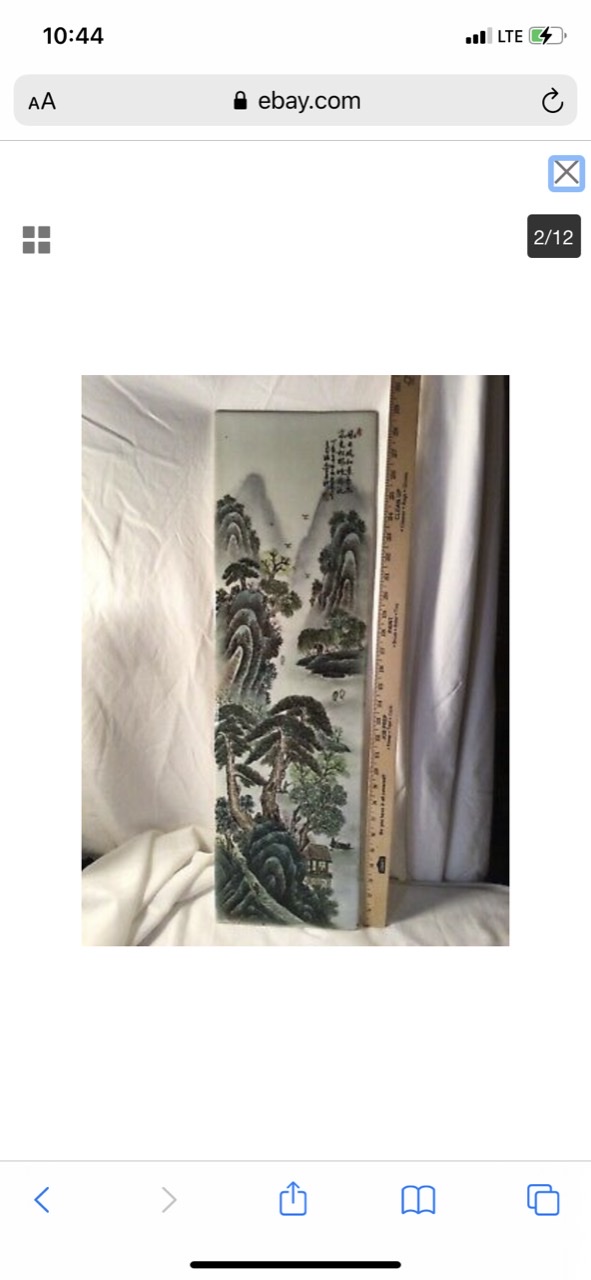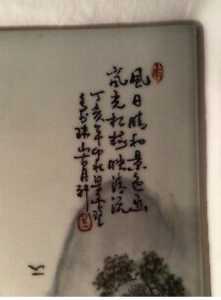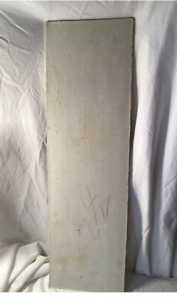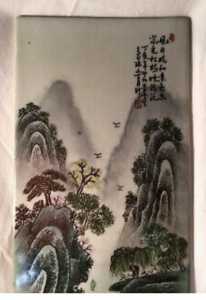The Chinese and Asian Art Forum. For Fans, Collectors and Dealers.
 Basic Rules For the BidAmount Asian Art Forum: Talk about whatever you want. You can even discuss and offer things that are for sale if they are authentic. Maximum image file size per post is 2 MB. Images of 700pxl x 700pxl are optimal if saved at a medium resolution. Be respectful of others and enjoy yourself. Click the YouTube link for a brief tutorial on using the forum. You can also EMBED Videos by cutting and pasting from You-Tube, Vimeo etc.
Basic Rules For the BidAmount Asian Art Forum: Talk about whatever you want. You can even discuss and offer things that are for sale if they are authentic. Maximum image file size per post is 2 MB. Images of 700pxl x 700pxl are optimal if saved at a medium resolution. Be respectful of others and enjoy yourself. Click the YouTube link for a brief tutorial on using the forum. You can also EMBED Videos by cutting and pasting from You-Tube, Vimeo etc.
NOTE: To post an item or add a new post, click open the category title from the FORUM LIST, and CLICK the Blue ADD TOPIC button.
I found what I wanted, there are two styles of Guangxu dragon but the one on this plaque isn't one of them. Given the size and that odd leg, I am also beginning to feel it is later.
https://www.bonhams.com/auctions/26272/lot/42/?category=list#/
@greeno107 Tim I am very fond of these animated plaques and this one is no exception my question is when does something stand as commemorative vs intent to deceive?
@lotusblack I think the intent to deceive is somewhat subjective. It is hard to say if the artist themselves created the work to decieve...I somehow doubt it. But the seller, starting with the first person who bought it from the plaques creator knew the tru age, right?
Did they sell it as 'antique' or decorative? I don't really know that anyone can say for sure.
What can be said is that the quality of the rendering was done with care by a professional, so in that regard, the aristry is not deceptful.
This is why it is so important that the current owner, if they choose to sell the piece down the road, represent the piece honesty to the best of their knowledge.
In my opinion, it has value as art, but not antique.
@greeno107 I agree even though is later. I like the artistry very much and believe that’s the real value.
Hello Brian
The dragon on the plaque is in and out of the waves as is the one on the Sotheby’s piece. The kangxi is better done as you can see part of his tell come up behind his head and left arm. His tell is down in the waves.Here’s are some 19th century clouds in the same shape as his.this my a pinion John
Hello all, I am arriving late at this thread.
Dear Julia, who said that the scales of the dragon in the first coil are in the wrong direction? They are perfectly ok, in the same direction of the other scales. Ofcorse the dragon is missing parts, it is behind clouds! And also not completley palced within the frame.
To me this plaque is very nice, a superb example of Guangxu period. I have never seen a later example of this quality. Great piece.
Regards,
Giovanni
Brian pointed it out, in an earlier post. I assumed he meant the coil behind the head. If you think they are ok, I shall have to look again.
I am pleased you think it is OK for Guangxu as I was moving away from my earlier impression that it was. So, that means three styles of dragon scales were in use during that period.
Edit: just looked at the scales again and it is hard to follow the contortions but it does appear that Brian is correct.
I have just studied some other dragons: after I read the scales were wrong, I ended up looking at the neck the wrong way. 😊
Happy Thanksgiving to whom is celebrating. I did find this Guangxu example I’m working backwards as I still haven’t found a comparison but it has traits to support the Earlier dating.
@clayandbrush It is quite nice looking, and I have not seen a plaque from the 1970's like this, but I have some fish bowls of similar quality from the 1970's. I'll take some photos of my fishbowls when I'm at my building tomorrow for comparison.
Can you explain why the construction of the plaque is different than the typical Guangxu/early 20th c. plaques, such as the finished edges and absence of length wise marking from supports used during the firing? This is a very large plaque, and if Guangxu period, it is surprising that it does not to show some signs of old kiln techniques....even some kiln grit would be expected I think.
@greeno107 Tim your observation does have merit. Here is a Guangxu plaque and a modern plaque.
Modern plaque
Dear Greeno,
I am not sure that ALL Guangxu plaques have those support’s tracks, and ALL later ones are missing them.
Here is a Guangxu plaque that do not exhibit those marks:
https://www.bukowskis.com/en/lots/925238-plakett-porslin-kina-qingdynastin-guangxu-1862-1874
Here a qianjiang plaque by Rob Michiels:
Etc etc
Regards,
Giovanni
@clayandbrush The round plaque I think is Guangxu period as described. However, I have noticed that these round plaques do not have the marks on the back, and it is 32cm wide ... not very large, so perhaps supports during firing would not be needed.
The Qianjiang plaque is 20th c., perhaps early 20th c., but it certainly has some later color traits (the blue mountains) that look later. More importantly, it is only 19.6cm x 12.2cm.... that's really small, so I would not expect any supports used in the firing.
So, yes, I guess you are correct that it is possible for Guangxu plaques to be fired without the supports, but on such a large piece?
Maybe I am wrong about the size....
@thomasumjohnson What are the measurements of your plaque?
Dear Greeno,
everything that is fired in the kiln has some support, or it is directly lying on a flat surface. It is not matter of being large or small, it depends on firing techniques. Different types of support are seen in any period, for what I know.
Regards,
Giovanni
Closer clearer pictures are needed of the back and edges. I’m still having a hard time with this piece being as such. I see the horizontal rack marks that has been covered with kiln grit. I have seen not one large plaque with manufactured edges on the back and a prefect edge on both sides expect on modern plaques. We are not talking about a small plaque the floor tile tells us it’s large. Modern manufacturing was more accurate in shaping and forming due to automation. My understanding is earlier porcelain was scribed than snapped. That’s why the supports run Vertical to support the entire larger sheet. A wood fire kiln that is firing a large plaque laying on the ground where the temperature could not be controlled coming out with perfect back edges has to be explained. If a piece is to be concluded as a Guangxu period artistry. Being lose and picking and choosing doesn’t help. I want this piece to be Guangxu if so it will be a amazing find and would help me understand that such pieces where produced what to look for. But after looking at several hundred plaques these last few days I also own several myself. I have not found one example of a dragon in this form of perfect finish edges clouds produced in this manner boarding etc. This piece is a good study so far.
Thanks for visiting "The BidAmount Asian Art Forum | Chinese Art"
If you sell on eBay, or have a shop feel free to post images and descriptions and links.
Check back often for discussion about the latest news in the Chinese art and antique world. Also find out about the latest Asian art auctions at Sotheby's, Christie's, Bonhams and Tajans.
Auction results for: fine porcelain, ceramics, bronze, jade, textiles and scholar's objects. As well as Japanese, Thai, Vietnamese and other Asian cultures.
Thank you,
Peter Combs
Topics and categories on The BidAmount Asian Art Forum | Chinese Art
Kangxi vases, Kangxi dishes and chargers, Kangxi ritual pieces, Kangxi scholar's objects, Qianlong famille rose, Qianlong enamels, Qianlong period paintings, Qianlong Emporer's court, Fine porcelain of the Yongzheng period. Chinese imperial art, Ming porcelain including Jiajing, Wanli, Xuande, Chenghua as well as Ming jades and bronzes.
The BidAmount Asian Art Forum | Chinese Art
A free Asian art discussion board and Asian art message board for dealers and collectors of art and antiques from China, Japan, Korea, Thailand, Cambodia, Vietnam and the rest of Asia. Linked to all of the BidAmount Asian art reference areas, with videos from plcombs Asian Art and Bidamount on YouTube. Sign up also for the weekly BidAmount newsletter and catalogs of active eBay listing of Chinese porcelain, bronze, jades, robes, and paintings.
The art of calligraphy - and for the ancient Chinese it certainly was an art - aimed to demonstrate superior control and skill using brush and ink. Calligraphy established itself as one of the major Chinese art forms during the Han dynasty (206 BCE - 220 CE), and for two millennia after, all educated men were expected to be proficient at it.
The Museum’s collections of Asian art span nearly five millennia and encompass the cultures of China, the Himalayas, India, Japan, Korea, and Southeast Asia. In 2007, the Museum launched an initiative to create dedicated galleries for the collection, beginning with a gallery for the arts of Korea ...
Chinese art is full of symbolism, in that artists typically seek to depict some aspect of a totality of which they are intuitively aware.
China Online Museum is the finest online museum of Chinese art. It features Chinese calligraphy, painting, ceramics, bronzes, carving, and other artworks.
Chinese Ceramics & Works of Art. Overview Upcoming auctions Contacts Auction results ... Christie’s sales of Chinese ceramics and works of art showcase centuries of Chinese history. Held throughout the year in London, New York, Paris and Hong Kong, they attract a wide audience of collectors and connoisseurs vying for pieces as diverse as ...
Explore Asian Art Week. Contact the Specialist Department. Chinese Paintings ... Senior Specialist, Head of Sale. [email protected]. Tel:+1 212 641 5760. Bid in-person or online for the upcoming auction:Fine Chinese Paintings on 10 September 2019 at New York. Bid in-person or online for the upcoming auction:Fine Chinese Paintings on 10 ...
Discover an abundance of must-see art from all corners of a vast continent at Christie’s NY Asian Art Week. From contemporary classical and Chinese paintings to works with exemplary provenance from the Art Institute of Chicago, our Rockefeller Paza galleries will be full of ancient treasures and contemporary masterworks in a salute to the vibrant arts of Asia.
Sold to benefit The Art Institute of Chicago’s Asian Art Acquisition Fund, the sale features 84 lots with a focus on Ming and Qing porcelains, and offers a rare insight into the taste for collecting Chinese ceramics and works of art in the Midwest from the end of the 19th century through the 1980s. Highlights include two Wanli wucai garlic-head vases, a Qianlong mark and period, blue and ...
Specialist, Chinese Paintings, Christie's London Dr Malcolm McNeill is a Specialist in Chinese Paintings at Christie’s, based in London. He previously worked as an assistant curator of the Chinese collections and the Victoria and Albert Museum in London, as a researcher at the British Museum, and as a translator and tour guide at the National Palace Museum in Taipei.
The Christie's Education 2020 Conference: The Chinese Art Market 18 Jun 2019 Christie’s Education is delighted to announce our first international academic conference in Asia which will take place in Hong Kong from 26-27 November 2020 at the Hong Kong Convention and Exhibition Centre and will run in parallel with Christie’s Hong Kong Autumn Auctions.
The summer Chinese Art sale in Hong Kong will feature works of art from several private collections, including Qing porcelains and textile from the collection of the legendary Chinese art dealer A. W. Bahr (1877–1959), fine gilt bronze Buddhist sculptures from an old Hong Kong collection, an East Asian collection of Qing dynasty wine cups and jades, and a Japanese collection of Song ceramics ...
Sotheby's Chinese Works of Art Department holds two auctions each year in London, New York, Hong Kong and Paris.
Chinese Art - View Auction details, bid, buy and collect the various artworks at Sothebys Art Auction House.
With more than 340 Chinese works of art dating from the Neolithic to the Republic periods, highlights of this sale include a selection of Qing Imperial monochromes from the collection of Arnold and Blema Steinberg, early ceramics from the Art Institute of Chicago and Chinese porcelain and works of art from the collection of Henry Arnhold.
Results: Sotheby's Asia Week achieved $52.4 million in six strong auctions, exceeding pre-sale estimates. With 76.5% of lots sold and 60.3% of lots surpassing high estimates, the Asian art sales at Sotheby's indicate continued collector interest in the finest works of art from China, India and and the Himalayas.
Today's sale of Important Chinese Art will proceed as planned with sessions at 10 AM and 2 PM EDT. Sotheby's will be monitoring the weather conditions throughout the day and will be available to coordinate alternative bidding options should conditions make it difficult for clients to attend the auction in person.
Bonhams Chinese Art department is renowned for offering the finest works of art representing the richness and breadth of China's artistic heritage, particularly Imperial porcelain, white and spinach green jades, cloisonné and Buddhist art. Specialised international auctions are held globally, including London, Hong Kong and San Francisco.
Bonhams : Chinese Works of Art We use cookies to remember choices you make on functionality and personal features to enhance your experience to our site. By continuing to use our site you consent to the use of cookies. Please refer to our privacy and cookie policies for more information.
Bonhams Fine Art Auctioneers & Valuers: auctioneers of art, pictures, collectables and motor cars. We use cookies to remember choices you make on functionality and personal features to enhance your experience to our site. By continuing to use our site you consent to the use of cookies. ... Chinese Art (US) General enquiries
Bonhams : Fine Chinese Art We use cookies to remember choices you make on functionality and personal features to enhance your experience to our site. By continuing to use our site you consent to the use of cookies. Please refer to our privacy and cookie policies for more information.
Bonhams Fine Art Auctioneers & Valuers: auctioneers of art, pictures, collectables and motor cars Bonhams : Asian Art We use cookies to remember choices you make on functionality and personal features to enhance your experience to our site.
Bonhams are international auctioneers of fine Chinese and Japanese art. We specialise in rare Imperial and Export Chinese ceramics and works of art, as well as Japanese ceramics, fine and decorative works of art from the Neolithic Period to the 20th century. View on map
Bonhams Fine Art Auctioneers & Valuers: auctioneers of art, pictures, collectables and motor cars. We use cookies to remember choices you make on functionality and personal features to enhance your experience to our site. By continuing to use our site you consent to the use of cookies. ... Asian Art Bonhams. Work. 22 Queen St.
